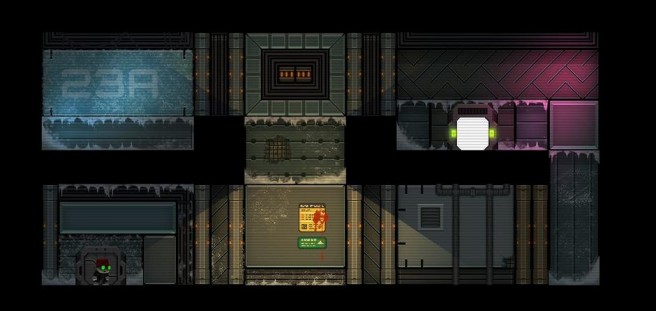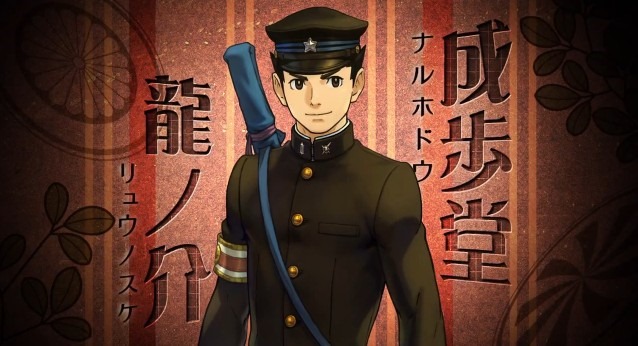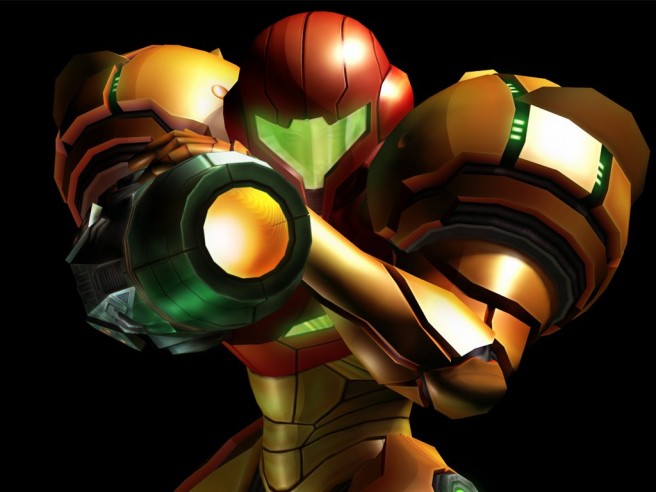Curve on bringing Stealth Inc 2 to Wii U, working with Nintendo, Iwata’s involvement with Fluidity: Spin Cycle, more
Posted on 9 years ago by Brian(@NE_Brian) in 3DS eShop, News, Wii U eShop | 1 Comment
CVG is among the outlets to have put up an interview with Curve Studios following the announcement of Stealth Inc 2 for Wii U today. Design director Jonathan Biddle and managing director Jason Perkins shared more about bringing Stealth Inc 2 to the Wii U eShop, past experiences working with Nintendo (including Satoru Iwata’s involvement with Fluidity: Spin Cycle), and more.
You can find Biddle and Perkins’ comments after the break. For CVG’s full article, check out this link.
Super Mario 3D World devs on game’s creation and more; new concept art
Posted on 9 years ago by Brian(@NE_Brian) in 3DS, News, Wii U | 0 comments
EDGE has published its full Super Mario 3D World interview/article with directors Koichi Hayashida and Kenta Motokura as well as producer Yoshiaki Koizumi. New concept art from the game is now available as well.
You can find some quotes from the three Super Mario 3D World devs below (with even more on EDGE). The concept art is posted above.
Curve talks Stealth Inc 2 – details, Nintendo asked for the original, future Wii U support coming, more
Posted on 9 years ago by Brian(@NE_Brian) in News, Wii U eShop | 0 comments
Earlier today, IGN published a new article about Stealth Inc 2 with details from Curve Studios managing director Jason Perkins and design director Jonathan Biddle. You can find information rounded up from the site’s article below.
– Game being brought to Wii U for many reasons
– Managing director Jason Perkins and design director Jonathan Biddle “love Nintendo and we want to give Iwata a hug”
– Stealth Inc incorporates many of the lessons learned while working on Fluidity for Wii and 3DS
– Nintendo asked Curve for a Nintendo version of Stealth Inc
– Curve couldn’t do it at the time since everyone was involved with bringing out an edition for Sony consoles
– Instead, Curve settled on bringing the game’s sequel to Wii U
– Designed exclusively from the ground up for Wii U
– Uses the GamePad features
– Co-op mode included
“I guess we really wanted to expand what we did the first time. One of the things with the original is because the levels are very short and built around this punishing loop, where you make a mistake and get sent back a very short time. They’re very cerebral, but also very precise. If you play too many of those levels in a row then you get burnt out very quickly. You’ll come back later as you enjoy it, but playing too quickly you get frustrated. So what we wanted to do was smooth that out a bit so you have the same gameplay but you’re able to have some downtime.” – Biddle
“What we’re doing with the sequel is still having that test chamber-based gameplay, but we’re pulling back. A clone will escape from the test into the facility at large, and then we’ll have a Metroid-structured game that sits in front of the test chambers. So you’ll explore the facility with a classic Metroidvania structure using abilities, getting to different areas and enemies in the exploration structure, but it’ll be more leisurely paced as regards the test chambers that you find and then enter in order to rescue the clones from within. There’s this dual-layer of gameplay so there’ll be intense tasks to do when you want, but also you can pull back and explore when you want to do more relaxed things. You’re not up against the clock any more so, if you can’t figure it, go off and leave it.” – Biddle
Capcom on Monster Hunter 4 Ultimate’s concept, G-rank quests, more
Posted on 9 years ago by Brian(@NE_Brian) in 3DS, News | 0 comments
Famitsu has published a new interview with Monster Hunter 4 Ultimate director Kaname Fujioka and producer Ryozo Tsujimoto. For quotes from the discussion (as translated by Siliconera), head past the break.
More: Capcom, interview, Monster Hunter 4 Ultimate
Kirby Triple Deluxe devs discuss the 3DS game, HAL’s relationship with Nintendo
Posted on 10 years ago by Brian(@NE_Brian) in 3DS, General Nintendo, News | 0 comments
CVG has put up a new interview with Kirby Triple Deluxe director Shinya Kumazaki and Nintendo director Yurie Hattori. As you would expect, most of the discussion pertains to the upcoming 3DS game, but there’s also some interesting comments about HAL’s relationship with Nintendo.
For Shinya and Kumazki’s full comments, head past the break.
Why Kirby looks angry on US game boxarts
Posted on 10 years ago by Brian(@NE_Brian) in General Nintendo, News | 9 Comments
Kirby tends to look “angry” more often than when shown on North American boxarts. Wondering why this is so?
Kirby Triple Deluxe director Shinya Kumazaki explained to GameSpot:
“For the Japanese versions we are, at [Kirby series developer] HAL, involved in everything throughout development, including the package design. The most powerful image of Kirby is that cute image, we think that’s the one that appeals to the widest audience.
“While it does start cute, we know there is a serious side to Kirby as well, and throughout the gameplay we see more and more of that, and the games themselves have quite a bit of depth. That being said, we recognise that Kirby’s cuteness is his biggest draw in [the Japanese] market.”
Kumazaki added that Nintendo of America handles things in North America, and provides HAL with “feedback and insight” into the market.
“What we have heard is that strong, tough Kirby that’s really battling hard is a more appealing sign of Kirby, so that’s what we feature in the US.”
More: interview, Kirby, Shinya Kumazaki, top
The Great Ace Attorney devs on the game’s 19th century setting and more
Posted on 10 years ago by Brian(@NE_Brian) in 3DS, News | 1 Comment
More quotes have emerged from Famitsu’s interview about The Great Ace Attorney with series creator Shu Takumi and producer Shintaro Kojima. The two talked about the game’s 19th century setting, concept, when the project came about, and more.
Head past the break for the latest comments from Takumi and Kojima.
NES Remix director talks about the series’ origins, development, more
Posted on 10 years ago by Brian(@NE_Brian) in News, Wii U eShop | 0 comments
IGN has put up a piece detailing the development of NES Remix up through the creation of the game’s impending sequel, including quotes from director Koichi Hayshida. You’ll find the full roundup of information below.
– Soon after Super Mario 3D Land came out, Hayashida and Nintendo’s Tokyo EAD studio needed to decide on their next project
– Super Mario 3D World was on the list
– NES Remix also came to mind
On the game’s origins…
“From the company side of things, they really wanted us to focus on Super Mario 3D World, but I sort of snuck off on my own free time and worked on getting some of the Famicom games up and running on Wii U. One of the results from my experimentation was [the NES-inspired minigame] Luigi Bros., which we included in 3D World. The other thing that came to fruition was NES Remix.”
– After working on Super Mario 3D World, Hayashida moved over to NES Remix full-time, in part out of nostalgia
“Personally speaking, I didn’t get to play a lot of Famicom [the Japanese name for the NES] games as a kid. So one reason, that might be a little selfish, was I wanted to play these games at work. And this was one way for me to do that. I wanted to go back and experience some of those titles.”
“That being said, as adults we’re busy people,” Hayashida continued. “And we don’t have a lot of time to play a game from beginning to end. For example, we don’t have time to sit down with one of the early Zelda titles and play it from beginning to end. So I really wanted a chance to play some specific scenes.”
– Hayashida designed 100 stages on his own before Nintendo hired developer Indiezero
– Indieszero helped to finish the game
– 3 more Nintendo employees joined 13 members from the Indiezero team
– Hayashida was concerned about the dated graphics
– Wasn’t sure if they would appeal to a younger audience
– Hayashida remembered the Double Mario concept from 3D World
“I thought ‘Wow, maybe we could take something new like that and apply it back to some of these classic games.'”
– The idea gave the team a way to add new elements into classic game scenes
On the importance of preserving the original games despite adding in improved graphical fidelity and other effects…
“I want these to be true to the spirit of the originals. There were things that happened based on the technology at the time. For example, there was object clipping. If too many objects were onscreen at the same time, the games would drop frames.”
“I think it’s really important to keep that flavor. To me, part of the challenge is, if you’re dropping frames, you’re moving slower. And the processing speed is dropping, but we need to recreate some of that because it did help make the game a little easier.”
– Hayshida understood that while it was important to add in new technology, it should not be at the expense of that original gameplay
On concerns from the fans…
“When we started development on NES Remix 2, we weren’t sure if the first NES Remix was going to be successful. I was really worried what the response for this title was going to be. Luckily, once it was launched, the reception was actually very good.”
– NES Remix was number one for four weeks straight according to Nintendo’s download rankings
– Hayashida believes it’s ranked in the top half of digital games currently available on the eShop
– With proof that the game was received well, and an audience asking for a sequel, Nintendo decided to spur development of NES Remix 2
– 12 team members were added to build the game quickly
– Original 13 devs from Indieszero grew to 25
On how the minigames in NES Remix 1 & 2 served an additional purpose…
“[Each one] represents the fundamental criteria to play these games. hey’re the famous scenes that everyone wants to play. It just so happens they naturally contain a look back to some of the strategic tip & tricks you would find in game magazines and things like that.”
“So a lot of these scenes are either encompassing things that you learned throughout the game, or they’re the parts that taught you how to play the rest of the game. I really think that playing these scenes would actually lead back to success in playing the main game. It’s an interesting effect.”
More: interview, Koichi Hayshida, nes remix, NES Remix 2, top
Super Mario 3D World dev open to revisiting The Adventures of Captain Toad gameplay in the future
Posted on 10 years ago by Brian(@NE_Brian) in General Nintendo, News, Wii U | 4 Comments
The Adventures of Captain Toad are a unique set of courses in Super Mario 3D World. They only encompass a small portion of the overall game, but they were very well received.
Some had hoped that The Adventures of Captain Toad would return in the future – through DLC, a standalone title with brand new levels, etc. While that’s yet to happen, Super Mario 3D World co-director Koichi Hayashida told EDGE this month that the team would “consider doing something with this feature in the future” if fans continue to show interest.
He said:
“We thought they were a lot of fun, so we’re really glad everyone likes them too. If enough fans express such enthusiasm, we’d consider doing something with this feature in the future.”
Kenta Motokura, Super Mario 3D World’s other co-director, also mentioned that the gameplay of The Adventures of Captain Toad was not at all inspired by smartphone titles:
“They weren’t inspired by smartphone games. The idea was to design a game that would become even more fun as you play through it, and this influenced the pace of the game, effectively increasing the rhythm. We felt that a short challenge with quick results would be a good motivation for players to advance onto the next course.”
Thanks to joclo for the tip.
Ken Lobb talks about initial fan resistance in making Metroid Prime first-person
Posted on 10 years ago by Brian(@NE_Brian) in GameCube, General Nintendo, News | 5 Comments
Ken Lobb, now the creative director at Microsoft Studios, once played a prominent role at Nintendo and worked on several games. This includes Metroid Prime – a title that, at the time, stirred up some controversy for turning the franchise into a first-person adventure.
Lobb spoke about the initial fan resistance surrounding Metroid Prime as part of an interview with EDGE this month. He said:
The fight, in the pre-internet world, was that we were getting a lot of pressure from fans. Nowadays, you’d be buried under Twitter, NeoGAF — both of which I love, by the way — but those voices are even louder today than they were back then. It comes back to a lesson I learned a long time ago: always listen to your customer, but also understand that if you do focus testing what you’re going to hear is, “I want that thing you did last time, because that was awesome.” Every once in a while, you have to learn to not listen to that and go, “Actually, Metroid in firstperson we think could make more sense.” Great creatives are going to disrupt their earlier designs and make things that are new, or build completely new games or new genres.

















